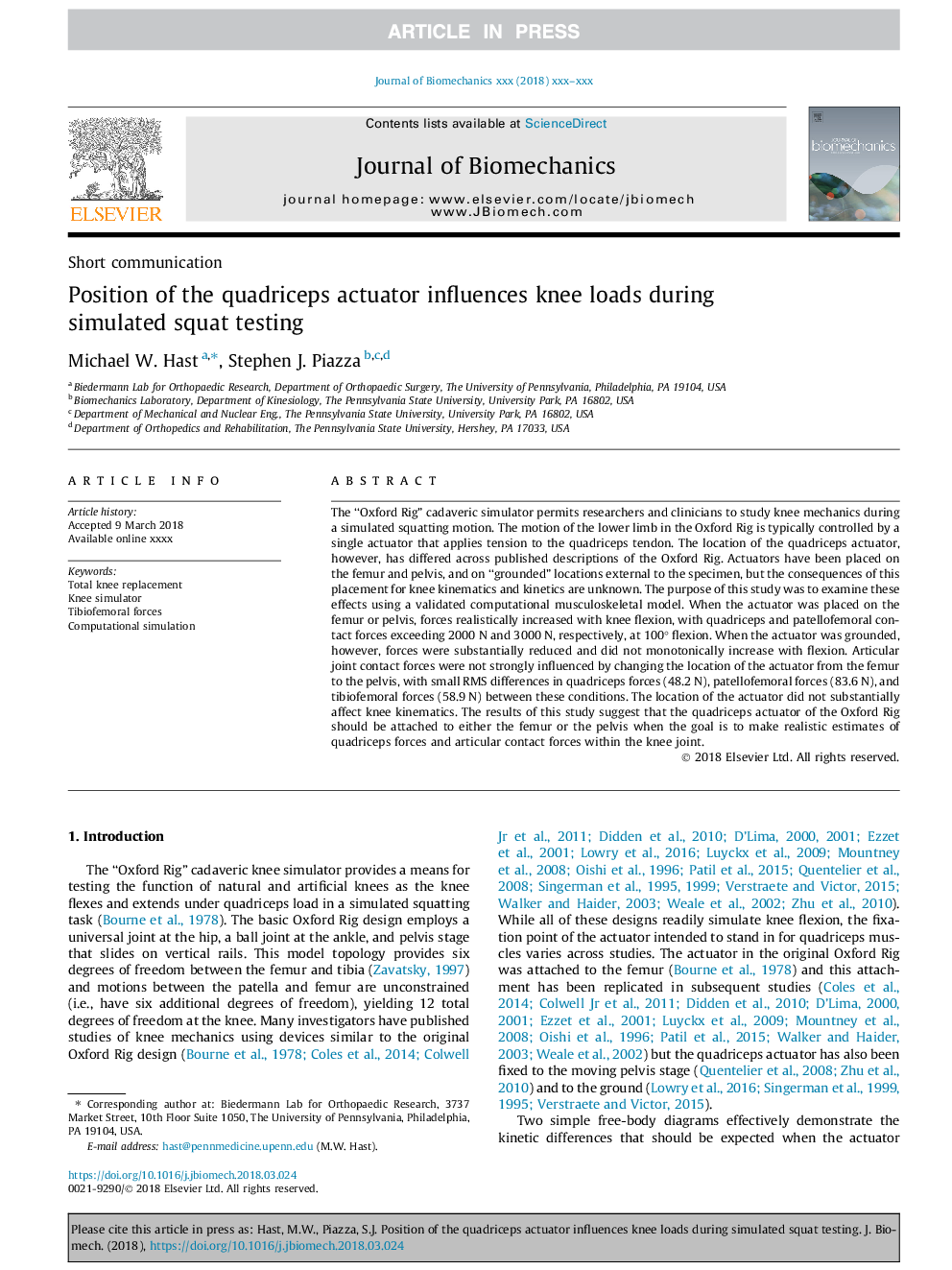| کد مقاله | کد نشریه | سال انتشار | مقاله انگلیسی | نسخه تمام متن |
|---|---|---|---|---|
| 7236202 | 1471091 | 2018 | 6 صفحه PDF | دانلود رایگان |
عنوان انگلیسی مقاله ISI
Position of the quadriceps actuator influences knee loads during simulated squat testing
ترجمه فارسی عنوان
موقعیت چهارچرخ عملگر بر بارهای زانو در تست آزمایش شبیه سازی شده تاثیر می گذارد
دانلود مقاله + سفارش ترجمه
دانلود مقاله ISI انگلیسی
رایگان برای ایرانیان
کلمات کلیدی
جایگزینی کل زانو، شبیه ساز زانو، نیروهای تیبوفومورال، شبیه سازی محاسباتی،
موضوعات مرتبط
مهندسی و علوم پایه
سایر رشته های مهندسی
مهندسی پزشکی
چکیده انگلیسی
The “Oxford Rig” cadaveric simulator permits researchers and clinicians to study knee mechanics during a simulated squatting motion. The motion of the lower limb in the Oxford Rig is typically controlled by a single actuator that applies tension to the quadriceps tendon. The location of the quadriceps actuator, however, has differed across published descriptions of the Oxford Rig. Actuators have been placed on the femur and pelvis, and on “grounded” locations external to the specimen, but the consequences of this placement for knee kinematics and kinetics are unknown. The purpose of this study was to examine these effects using a validated computational musculoskeletal model. When the actuator was placed on the femur or pelvis, forces realistically increased with knee flexion, with quadriceps and patellofemoral contact forces exceeding 2000â¯N and 3000â¯N, respectively, at 100° flexion. When the actuator was grounded, however, forces were substantially reduced and did not monotonically increase with flexion. Articular joint contact forces were not strongly influenced by changing the location of the actuator from the femur to the pelvis, with small RMS differences in quadriceps forces (48.2â¯N), patellofemoral forces (83.6â¯N), and tibiofemoral forces (58.9â¯N) between these conditions. The location of the actuator did not substantially affect knee kinematics. The results of this study suggest that the quadriceps actuator of the Oxford Rig should be attached to either the femur or the pelvis when the goal is to make realistic estimates of quadriceps forces and articular contact forces within the knee joint.
ناشر
Database: Elsevier - ScienceDirect (ساینس دایرکت)
Journal: Journal of Biomechanics - Volume 73, 17 May 2018, Pages 227-232
Journal: Journal of Biomechanics - Volume 73, 17 May 2018, Pages 227-232
نویسندگان
Michael W. Hast, Stephen J. Piazza,
